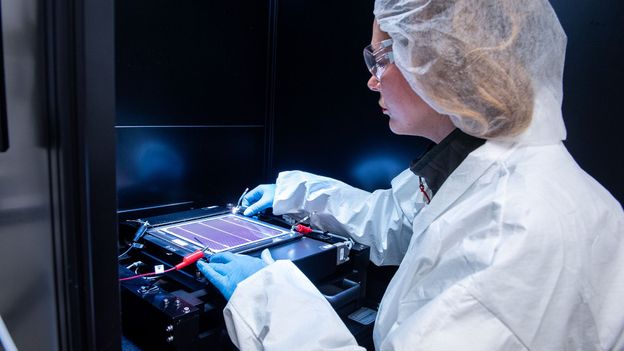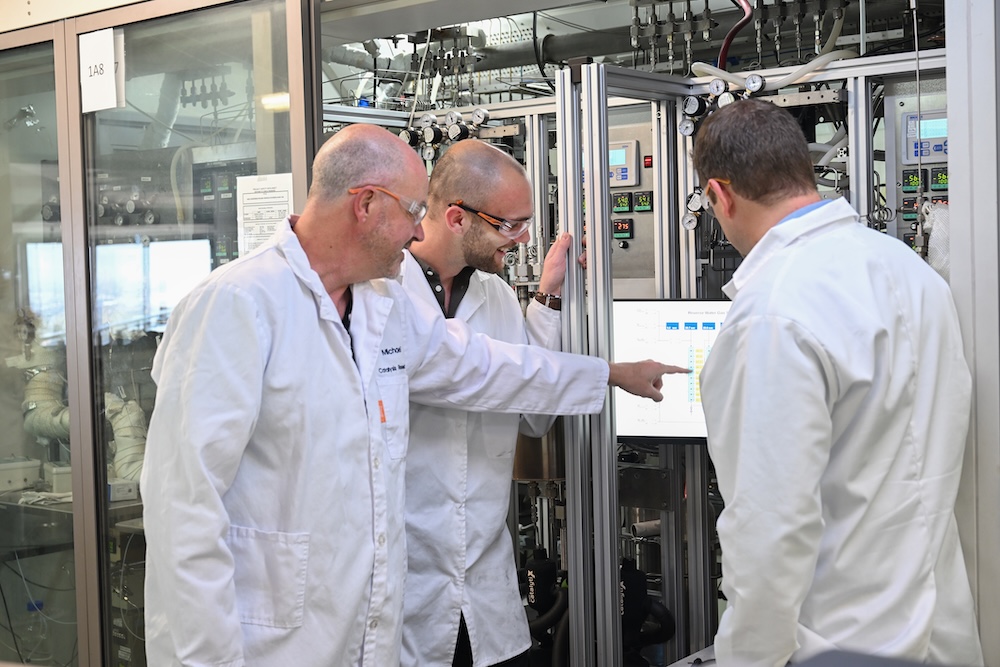Advancements in Perovskite Solar Technology and Contribution to Sustainable Development Goals
1. Enhancing Solar Efficiency for SDG 7
- The development of tandem perovskite solar cells represents a significant technological advancement, directly supporting Sustainable Development Goal 7 (Affordable and Clean Energy).
- While laboratory-scale “champion” cells have achieved efficiencies exceeding 30%, a notable gap exists between these records and the performance of commercially manufactured panels.
- Expert analysis from Tsutomu Miyasaka, a pioneer in perovskite applications, highlights the challenge of maintaining consistent quality over large-scale production, a crucial factor for the widespread adoption of clean energy infrastructure.
- The performance data presented in commercial specification sheets is considered more representative of real-world application, and closing the gap between lab records and commercial output is a meaningful industry milestone.
2. Commercialization and Infrastructure Development for SDG 9
The transition from laboratory innovation to scalable manufacturing is a key indicator of progress in SDG 9 (Industry, Innovation, and Infrastructure). Several companies are leading this effort.
- Oxford PV: Is now manufacturing cells at a factory in Germany. The company has initiated a pilot program, sending approximately 100kW of tandem solar panels to a commercial solar farm in the US. These models, with a stated efficiency of 24.5%, are designed to power around 14 average US households and will provide critical performance data.
- Swift Solar: A spinout from MIT and Stanford, announced a pilot with American Tower Corporation to deploy its perovskite tandem panels across 42,000 telecommunications towers, integrating renewable energy into essential infrastructure.
- CubicPV and NREL: Have collaborated to achieve 24% efficiency in tandem cells, furthering the technological foundation for clean energy.
- Caelux: Has made its first commercial shipment of its Active Glass perovskite technology, marking a move towards market availability.
3. Global Innovation Driving SDG 13 (Climate Action)
Rapid innovation, particularly in China’s leading solar market, is accelerating the global transition to renewable energy, which is fundamental to achieving SDG 13 (Climate Action).
- Chinese firms are setting new benchmarks for solar cell efficiency:
- Trinasolar: Announced a world-record conversion efficiency of 31.1% on a tandem solar cell and has licensed Oxford PV’s technology for the domestic market.
- Longi: Has reported achieving a 33.9% efficiency for a single cell.
- This competitive landscape fosters rapid technological advancement, which is essential for developing the scalable, high-efficiency solar solutions needed to combat climate change globally.
Analysis of Sustainable Development Goals in the Article
1. Which SDGs are addressed or connected to the issues highlighted in the article?
The article on perovskite solar cell technology primarily addresses the following Sustainable Development Goals:
- SDG 7: Affordable and Clean Energy – The core theme is the development of more efficient solar panels, a key technology for clean energy generation.
- SDG 9: Industry, Innovation, and Infrastructure – The text details the innovation process, from lab-scale tests to factory manufacturing and commercial pilot projects, highlighting advancements in industrial technology.
- SDG 13: Climate Action – By focusing on improving a renewable energy source, the article implicitly addresses the goal of combating climate change, as solar power is a critical tool for reducing greenhouse gas emissions.
- SDG 17: Partnerships for the Goals – The article mentions international collaborations and technology licensing agreements, which are central to achieving global goals.
2. What specific targets under those SDGs can be identified based on the article’s content?
Based on the article’s discussion of solar technology advancement and deployment, the following specific SDG targets can be identified:
-
SDG 7: Affordable and Clean Energy
- Target 7.2: By 2030, increase substantially the share of renewable energy in the global energy mix. The development of more efficient solar cells, as described in the article with companies achieving efficiencies of “24.5%”, “31.1%”, and “33.9%”, directly contributes to making solar power more competitive and scalable, thus helping to increase its share in the energy mix.
- Target 7.a: By 2030, enhance international cooperation to facilitate access to clean energy research and technology… and promote investment in energy infrastructure and clean energy technology. The article highlights research from a “Japanese expert Tsutomu Miyasaka,” manufacturing in Germany by “Oxford PV,” and rapid advancements by firms in China like “Trinasolar” and “Longi,” showcasing international efforts in clean energy research and technology.
-
SDG 9: Industry, Innovation, and Infrastructure
- Target 9.4: By 2030, upgrade infrastructure and retrofit industries to make them sustainable, with increased resource-use efficiency and greater adoption of clean and environmentally sound technologies and industrial processes. The article describes the shift from lab-scale cells to factory manufacturing, such as Oxford PV’s factory in Germany, and the deployment of these new panels in commercial infrastructure like a “commercial-scale solar farm in the US” and “telecommunications towers,” which represents the adoption of cleaner technologies.
- Target 9.5: Enhance scientific research, upgrade the technological capabilities of industrial sectors in all countries… The entire article is a testament to this target, detailing the push to close the gap between “champion” lab cells and commercially manufactured panels. The mention of spinouts from “MIT and Stanford” (Swift Solar) and collaborations with research labs like “NREL” further underscores the focus on enhancing scientific research and technological capabilities.
-
SDG 17: Partnerships for the Goals
- Target 17.7: Promote the development, transfer, dissemination and diffusion of environmentally sound technologies to developing countries on favourable terms… The article provides a concrete example of this with the deal where “Oxford PV recently signed a deal to allow the firm [Trinasolar] to license its technology in China’s domestic market.” This represents a partnership for technology transfer and diffusion.
3. Are there any indicators mentioned or implied in the article that can be used to measure progress towards the identified targets?
Yes, the article contains several specific and implied indicators that can measure progress:
-
For SDG 7 (Affordable and Clean Energy)
- Implied Indicator for Target 7.2: The primary performance metric discussed is “conversion efficiency” of solar cells. The specific figures mentioned—”24.5%”, “31.1%”, and “33.9%”—serve as direct, quantifiable indicators of technological progress that enables a greater share of renewable energy. Higher efficiency means more power from the same area, making solar more viable.
-
For SDG 9 (Industry, Innovation, and Infrastructure)
- Implied Indicator for Target 9.5: The “world-record conversion efficiency” announcements from various companies (Trinasolar, Longi) are indicators of successful scientific research and technological advancement. Furthermore, the transition from lab-scale records to commercial production, as highlighted by Oxford PV sending its “first pilot of around 100kW of tandem solar panels,” is a key indicator of moving from research to industrial application.
-
For SDG 17 (Partnerships for the Goals)
- Qualitative Indicator for Target 17.7: The article explicitly mentions a “landmark perovskite PV patent licensing agreement” between Oxford PV and Trinasolar. The existence of such cross-border technology transfer agreements is a direct indicator of progress in the dissemination and diffusion of environmentally sound technologies.
4. Summary Table of SDGs, Targets, and Indicators
| SDGs | Targets | Indicators Identified in the Article |
|---|---|---|
| SDG 7: Affordable and Clean Energy | 7.2: Increase substantially the share of renewable energy in the global energy mix. | Solar Cell Conversion Efficiency: Specific percentages (e.g., 24.5%, 31.1%, 33.9%) are mentioned as key metrics for technological improvement, which is a driver for increasing the renewable energy share. |
| SDG 9: Industry, Innovation, and Infrastructure | 9.5: Enhance scientific research, upgrade the technological capabilities of industrial sectors. | Commercial Pilot Deployments: The shipment of a “100kW” pilot by Oxford PV and the deployment on telecommunications towers by Swift Solar indicate the successful upgrading of technology from lab to industry. |
| SDG 17: Partnerships for the Goals | 17.7: Promote the development, transfer, dissemination and diffusion of environmentally sound technologies. | International Technology Licensing Agreements: The deal for Oxford PV to “license its technology in China’s domestic market” to Trinasolar is a direct example of technology transfer. |
Source: bbc.com






